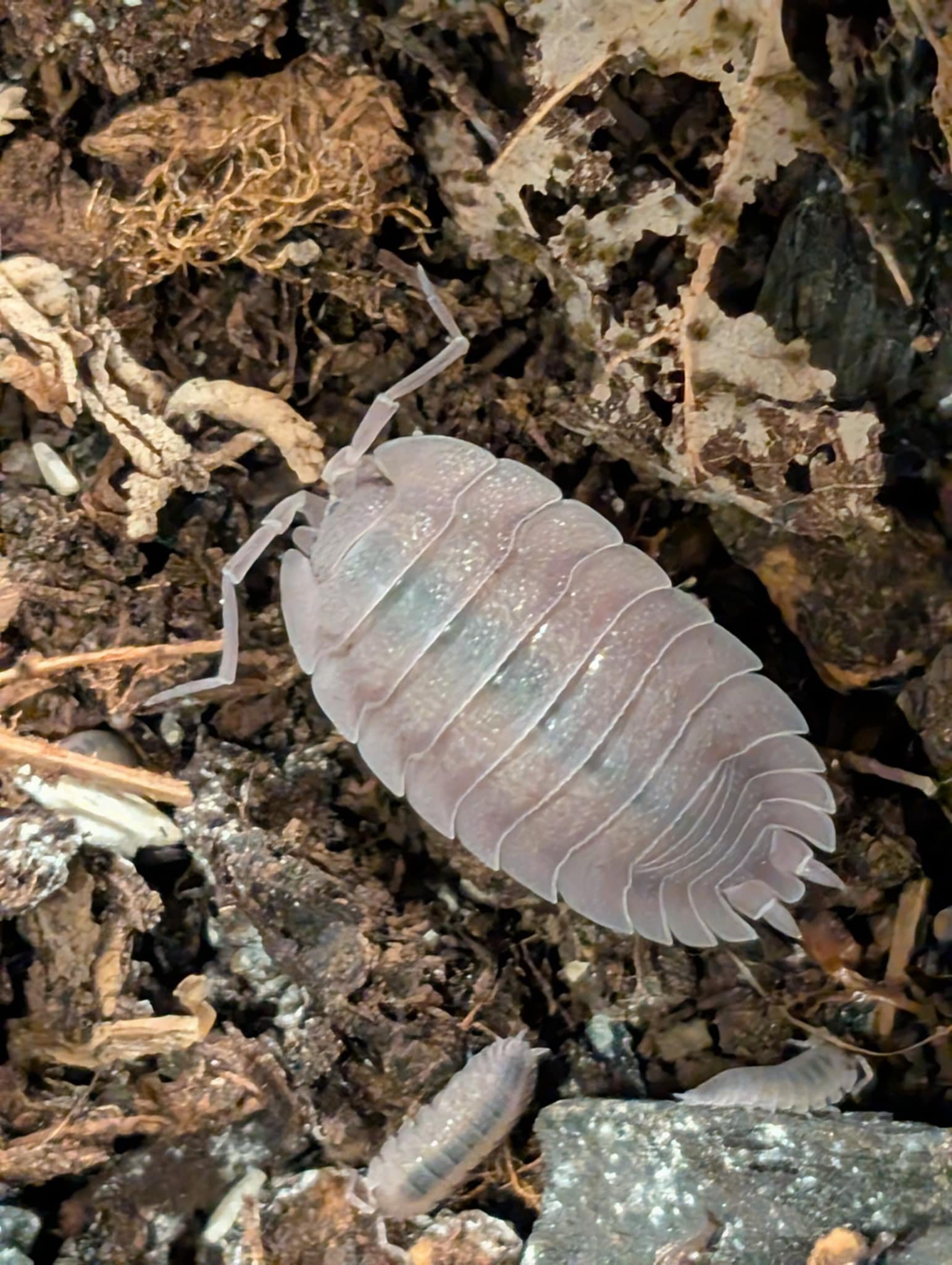
Violets
10-12 Count per Culture
The Porcellio Incanus Baeticensis 'Violet' Isopod, often simply called the Violet Isopod, is a captivating species prized for its unique coloration and relatively easy care. Here's a comprehensive guide:
Appearance:
Size: They are a medium-sized isopod, reaching about 1.5cm in length.
Color: Their most striking feature is their vibrant violet coloration, which can vary in intensity depending on age and environmental factors.
Body: Like other isopods, they have a segmented body with seven pairs of legs and two antennae.
Habitat and Care:
Enclosure: A plastic or glass container with good ventilation is suitable. The size depends on the population, but ensure ample space as they are active.
Substrate: A mix of coconut coir, sphagnum moss, and leaf litter provides a comfortable environment. Add some decaying wood for them to feed on.
Humidity: They prefer a slightly drier environment compared to some other isopods. Keep one side of the enclosure moist and the other dry.
Temperature: Room temperature is generally sufficient, but avoid extreme heat or cold.
Hiding Spots: Provide cork bark, rocks, or other decorations to create hiding spots.
Diet:
Detritivores: They primarily feed on decaying organic matter like leaf litter and wood.
Supplementation: You can supplement their diet with occasional feedings of vegetables, fruits, and protein sources like dried shrimp or fish flakes.
Benefits in Bioactive Setups:
Clean-up Crew: They are a great addition to bioactive terrariums, acting as a "clean-up crew" by consuming waste and decaying matter.
Soil Aeration: Their burrowing helps aerate the soil.
Breeding:
Relatively Easy: They are relatively easy to breed in captivity with proper conditions.
Interesting Facts:
Active Isopods: They are known for being quite active, especially at night.
Social Creatures: They prefer to live in groups.
Unique Coloration: Their violet hue is unique among isopods, making them a sought-after species.
10-12 Count per Culture
The Porcellio Incanus Baeticensis 'Violet' Isopod, often simply called the Violet Isopod, is a captivating species prized for its unique coloration and relatively easy care. Here's a comprehensive guide:
Appearance:
Size: They are a medium-sized isopod, reaching about 1.5cm in length.
Color: Their most striking feature is their vibrant violet coloration, which can vary in intensity depending on age and environmental factors.
Body: Like other isopods, they have a segmented body with seven pairs of legs and two antennae.
Habitat and Care:
Enclosure: A plastic or glass container with good ventilation is suitable. The size depends on the population, but ensure ample space as they are active.
Substrate: A mix of coconut coir, sphagnum moss, and leaf litter provides a comfortable environment. Add some decaying wood for them to feed on.
Humidity: They prefer a slightly drier environment compared to some other isopods. Keep one side of the enclosure moist and the other dry.
Temperature: Room temperature is generally sufficient, but avoid extreme heat or cold.
Hiding Spots: Provide cork bark, rocks, or other decorations to create hiding spots.
Diet:
Detritivores: They primarily feed on decaying organic matter like leaf litter and wood.
Supplementation: You can supplement their diet with occasional feedings of vegetables, fruits, and protein sources like dried shrimp or fish flakes.
Benefits in Bioactive Setups:
Clean-up Crew: They are a great addition to bioactive terrariums, acting as a "clean-up crew" by consuming waste and decaying matter.
Soil Aeration: Their burrowing helps aerate the soil.
Breeding:
Relatively Easy: They are relatively easy to breed in captivity with proper conditions.
Interesting Facts:
Active Isopods: They are known for being quite active, especially at night.
Social Creatures: They prefer to live in groups.
Unique Coloration: Their violet hue is unique among isopods, making them a sought-after species.
